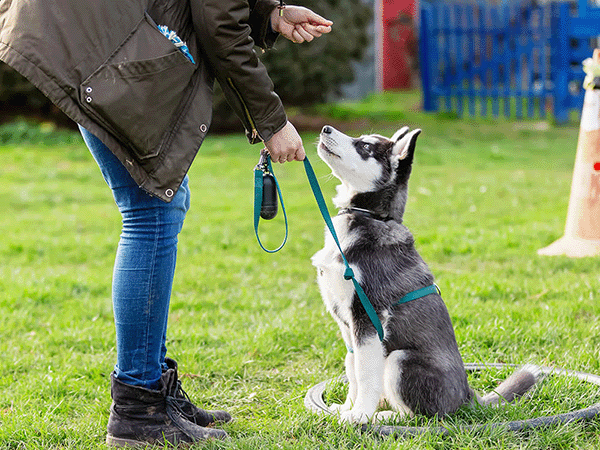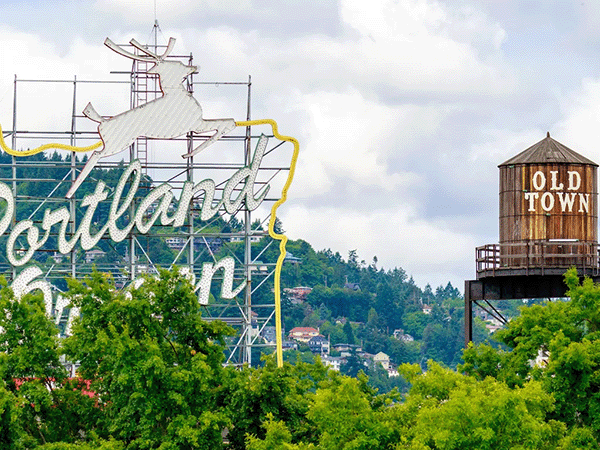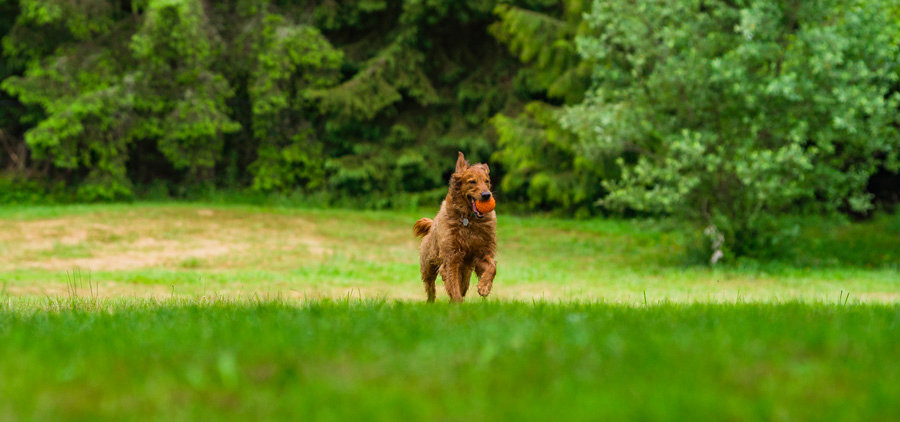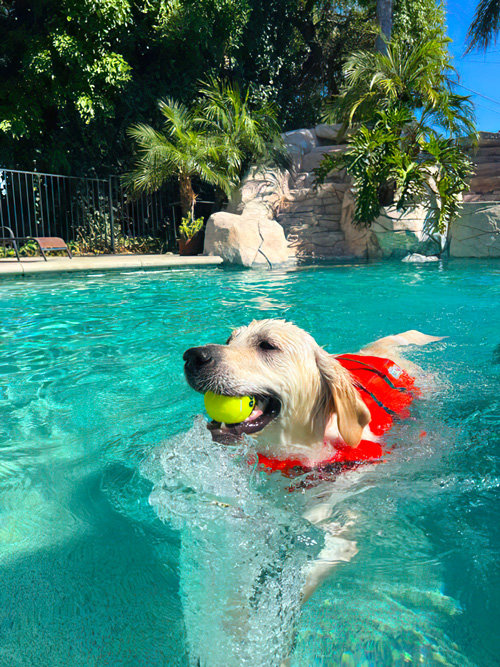The Ultimate Guide to Scent Training for Dogs

Your dog's nose is an amazing tool. Did you know they have 40 times the olfactory receptors than humans? Scent training for dogs taps into this superpower, turning everyday moments into exciting sniff-fests. It's enriching for all types of dogs – reactive, shy, or simply adventurous. Ready to explore the world of scent work for dogs? Let's get started.
That’s why scent training (which is often referred to as nose training, nose work, or Scent Work) is so much fun. Not only does training your dog in Scent Work allow your dog or puppy to use its incredible nose, it gives you an excuse to spend time together in a highly enriching experience.
Per Sniffspot’s proprietary research survey, 32% of dog guardians have tried scent training with their dog — and 65% of people that have never tried scent training with their dog would love to try it.
What is scent training for dogs?
You know when you see a dog at the airport sniffing suitcases or outside, sniffing the ground with its nose? What it’s doing is using its scent receptors and extraordinary sense of smell to find certain scents it’s been trained to recognize. Dogs are able to use their incredible sense of smell to find everything from drugs to truffles, but in order to do that, they have to be trained in Scent Work.
Scent Work is when you train a dog to find a hidden odor or odors. Those odors may be dog scents, human scents, or even the scent of essential oils or drugs. While some dogs do it as, well, a career of sorts (as in the dogs at the airport), some dogs just do it for fun and to spend a little extra time with their humans.
One of the best things about Scent Work is that with just a little bit of time and some simple puppy scent training, you can help your dog learn to hunt down all kinds of scents. Scent training for dogs can reap all kinds of benefits–for both you and your beloved animals. All you need are a few simple dog games and some time!
Key Takeaways
- Scent training benefits dogs of all kinds: It provides mental and physical enrichment, builds confidence, helps with reactivity, and strengthens your bond, regardless of your dog's age, breed, or temperament.
- You can easily start scent training at home: Simple games using household items and your dog's favorite toys can tap into their natural sniffing abilities and make learning fun.
- Find the perfect training spot with Sniffspot: Explore Sniffspot's listings to discover private, dog-friendly locations ideal for focused scent work and other enriching activities.
Why is Scent Training Important?
Beyond being a stimulating activity, scent training (also called nosework or scentwork) offers numerous benefits for dogs of all ages, breeds, and temperaments. It's especially helpful for reactive, nervous, or senior dogs, as well as puppies and those recovering from injuries. Scent work can improve focus, build confidence, and even strengthen the bond between you and your dog.
Provides Mental Stimulation
Scent training is a fantastic way to challenge your dog mentally. Dogs have an incredible sense of smell, and engaging this natural ability provides a fulfilling outlet for their energy. It's like a puzzle for their noses, keeping them engaged and entertained. This mental workout can be especially beneficial for high-energy breeds or dogs who spend a lot of time indoors. As the American Kennel Club explains, scent work is a mentally stimulating activity that can benefit dogs of all breeds and ages. A tired dog is often a well-behaved dog, and scent training can contribute to a calmer, more relaxed demeanor.
Builds Confidence
Successfully finding a hidden scent is a rewarding experience for dogs. This positive reinforcement helps build their confidence and self-esteem. For shy or anxious dogs, the sense of accomplishment they gain through scent work can be transformative. It empowers them to explore their environment and trust their instincts, leading to a more confident and outgoing personality. Resources like this guide from Tug-E-Nuff highlight how scent training can be particularly helpful for nervous dogs, helping them feel more secure and less reactive in new environments.
Strengthens Your Bond
Scent training is a collaborative activity that requires teamwork between you and your dog. Working together towards a common goal creates a shared experience and strengthens the bond you share. The positive reinforcement used in scent work fosters trust and communication, deepening your connection. Plus, the focused attention you give your dog during training sessions makes them feel valued and loved. It's quality time spent together, building a stronger, more positive relationship. This can be especially valuable when introducing your dog to new places, like the dog parks you can find on Sniffspot.
Helps with Reactivity
For reactive dogs, scent training can be a game-changer. It provides a positive outlet for their energy and helps them focus on something other than their triggers. By engaging their noses, they can learn to disengage from distractions and focus on the task at hand, leading to a calmer and more controlled demeanor. Tug-E-Nuff notes scent work's benefits for reactive dogs, helping them manage responses in challenging situations. Finding safe and enriching spaces for scent training, like those listed on Sniffspot, can further enhance these benefits. Having a dedicated space where your dog can focus on scent work without encountering potential triggers can make a significant difference in their progress and overall well-being.
What are the benefits of Scent Work?
Although your dog may never use his or her senses to track down drugs or bombs, there are still so many benefits to Scent Work and so many ways to have them use their powerful senses of smell! Here are just a few:
- You can do Scent Work with any kind of dog.
Whether you’ve got terrier types at home or great danes, puppies or dogs, all canines have such powerful senses of smell and natural ability to detect odor, there’s absolutely no reason you can’t train your dog in scent work. With a few favourite puppy scent training games, your dog will be well on their way to Scent Work mastery!
Here is a list of most to least common breeds to have tried scent training based on Sniffspot’s proprietary survey:
Doberman Pinscher, Border Collie, German Shepherd Dog, Labrador Retriever, Australian Shepherd, Australian Cattle Dog, Mixed breed, Golden Retriever, Pitbull / American Staffordshire Terrier, Beagle, Great Dane, Siberian Husky, Boxer, Chihuahua
- You can start Scent Work training on your own.
You also don’t necessarily need a professional trainer to do it. Even if you’re not a licensed trainer, a dog’s sense of smell and natural ability is so extraordinary that you can at least get started on Scent Work with some simple puppy scent training or nose work games.
- Scent Work stimulates your dog’s brain and allows your dog to utilize his or her innate ability to pick up scents.
Imagine if you had an incredible superpower–let’s say flying. Maybe you can get off the ground but you can’t quite stay airborne or do loop-de-loops. Wouldn’t you want someone to show you how to get better, faster, and maybe even show off a little?
Well, that’s how your dog feels about his or her ability to pick up scents. A dog’s incredible nose can not only pick up more scents than a human’s, it can even tell how long an odor has been in a certain place and can even distinguish the different scents within a scent (and we’re not just talking about strong scents here–they can also pick up super-subtle scents as well). When you help nurture your dog’s sense of smell through Scent Work, you help stimulate their mind and make them feel like they’re doing something great so give them a chance to show off by cultivating this natural gift!
- It’s a great way to spend time together.
In fact, this might really be the beauty of Scent Work. There’s nothing better than spending time with your furry friend and this gives you both a great excuse! Not only that, it’s a great way for both of you to get a little exercise!
How Does Scent Training Work?
Scent training involves teaching your dog to locate a specific scent and signal its discovery. This can range from finding a hidden treat to identifying specific odors in more advanced training. The beauty of scent training is that it can be adapted for any dog, regardless of age, breed, or physical limitations. Even if your dog isn't a high-energy breed, they can still participate and enjoy the mental workout.
The training process typically starts by introducing your dog to a target scent, rewarding them for showing interest, and then gradually increasing the difficulty. Many trainers recommend starting with birch essential oil, as it's unfamiliar to most dogs and easy to find. You can easily teach your dog scent work at home with minimal supplies. The American Kennel Club offers a helpful guide on how to get started.
Initially, you might start with the scent vessel right in your hand, letting your dog sniff and investigate. As they grow more comfortable with the target scent, you can place the vessel on the ground and eventually hide it in more challenging spots. Remember to always reward your dog at the source of the scent to reinforce the behavior. This positive reinforcement helps them understand what you're asking and keeps them engaged in the learning process. You can find more helpful tips on Sniffspot's blog, which covers a variety of dog-related topics.
As your dog progresses, you can introduce new scents and more complex hiding scenarios. Some dog owners even create fun obstacle courses for their dogs to explore while searching for the hidden scent. This not only enhances the mental challenge but also provides physical activity. If you're looking for dog-friendly places to practice, Sniffspot offers a variety of locations where you and your dog can enjoy time together.
How to get started training your dog in scent work
As we said above, part of the beauty of scent work is that you can easily start this at home without fancy equipment or expensive training. 83% of people that tried scent training with their dog report* succeeding!
Here’s a helpful guide to get you started:
- Start small and simply.
As with any dog training, it’s always best to start small and although there are nationwide Scent Work trials and competitions hosted by associations like the AKC, there’s no reason to think your dog needs to win a medal right off the bat!
Here’s an easy puppy scent training game to get you started that’s basically a combination of Scent Work and “Hide and Go Seek”: have someone hold your puppy while you find a good hiding spot, leaving a trail of treats as you go. Once you’re hidden, have that person release the puppy. They may take some time sniffing their way treat by treat to find you, but we can almost guarantee that little puppy’s incredible nose will eventually find your scent trail as dogs are very adept at picking human scents! When they find you, give them a treat as a reward. Repeat the process a few more times, hiding in a new spot without your fresh scent so they’re not just retracing their steps. Believe it or not, you’ve already completed the first step of Scent Work!
Here’s another great puppy scent training game: take your puppy or dog’s favorite toy and have them play with it a bit. After a while, take it from them and hide it some place where it will be relatively easy for them to find. Walk back to the puppy (when you do, follow your exact steps so you don’t leave another scent trail). Release your puppy and say “Go find it!” wait as they follow the scent traces back to the toy. When they do, use praise and a treat as rewards.
- Incorporate the scents of other animals into your Scent Work.
Remember that treats and human scents aren’t the only thing a dog’s nose can pick up. Dogs are incredible at picking up the scent traces and hidden odor of other animals like cat scents and even scents left by predators or prey. A good way to develop this ability is with a simple nose work exercise: take a blanket or other piece of material that has the odor of another animal on it like a cat or even another dog and hide it (as you did when you hid the toy, have your dog stay in another room as you do). Come back to your dog, release them and as you did in previous examples, say “Go find it!” Watch them use their nose to find the blanket, and then use praise and a treat as rewards.
- Incorporate other scents into your Scent Work.
Just as dogs can track down other animal scents, so, too, can they track down other scents like essential oils. Try this simple Scent Work game that can be done inside or out to see what we mean: put a little essential oil like lavender on a toy or ball. Play with your dog, using the toy for a couple of days in a row so he or she gets used to the smell of the essential oil.
After a few days of this, hide the ball while the dog isn’t there (making sure it still has enough of the oil on it that the dog will be able to find it), leaving a scent trail of tiny pieces of paper that have been doused with the oil (dog park rentals are great places to do this since it will be devoid of dog or human scents already familiar to him or her). Have the pieces of paper lead to the ball. When you bring your dog into the room, say “Go find it!” and watch as he or she uses their nose to find the ball. When they do, use praise and a treat as rewards.
- Have them look for treats.
The one thing that may motivate your dog to use its sense of smell even more than finding you? Finding a tasty treat! Just as you hid so your puppy or dog could use its nose to find you, you can hide their favourite treat around the house and then let them loose to find it. We recommend hiding them somewhere at ground level to make it easier–perhaps under a rug, a couch, etc. Pretty much anything can be turned into a scent-training dog toy if you put a treat on, in, or under it!
- Play “Which Hand is It In?”
You know that game you play with children where you put a dime in one fist, swirl your hands around and then ask them to guess which one the dime is in? The same game works for dogs learning Scent Work! All you have to do is put a treat or a little piece of food in your fist (treats and foods with strong scents like meat work best) and let your dog smell it. As you do, say “Go find it!” and then open your hand and let them have the food. Do this a few times and switch hands each time. After a while, delay opening your hand until it’s clear his or her nose is really sussing out that there’s a treat in there (not that they just happened to pick the right hand). This allows your dog to learn that his or her nose is what’s allowing her to find the treat.
You can also use the “Shell Game” version of this game to teach Scent Work. With about three or four cups you can hide a treat under one of the cups. When it’s clear your dog is zeroing in on one of the cups because he or she is picking up on the scent of the treat under the cup, pick it up, and then let them have the treat, praising them as you do.
6. Make sure to reward them every time!
Dogs are pretty much exactly like humans in that the more praise and adoration they get, the more motivated they are to do something well. The same goes for Scent Work. The more you praise your dog and offer a reward like a treat when they’ve done well, the more likely they are to improve. Yes, Scent Work is something that’s intuitive for a dog, but that doesn’t mean they don’t want a little recognition!
7. Keep your sessions short.
As is the case with socialization or other puppy/dog training, there’s only so long a dog can train before they need a break. Keep your sessions short and productive so you don’t tucker your dog out.
That should at least give you a great foundation for getting your dog started in Scent Work. Even if your dog never becomes a bomb sniffing dog or ends up winning medals, playing scent training games is a wonderful way to spend some great, focused time together and make them feel great about their own natural abilities!
Specific Scent Work Training Steps
Introducing the Scent
Start by introducing a novel scent, like birch essential oil, on a cotton swab. Place the swab inside a tin with holes—this acts as your scent vessel. Use tweezers and gloves throughout the process to avoid contaminating the scent, and remember to dispose of scented materials properly after each session. This careful handling keeps the scent pure and helps your dog focus. The American Kennel Club offers helpful tips for getting started with scent work at home.
Building Difficulty
Begin with the scent right in your hand, letting your dog investigate. Once they understand the game, progress to placing the scent vessel on the ground. As your dog improves, start hiding the vessel. Use shallow cardboard boxes initially, and gradually introduce blank boxes as distractions. This method adds complexity and helps your dog refine their skills. For more tips on building difficulty, check out this article from Daily Paws.
Reading Your Dog's Cues
Pay close attention to your dog's subtle body language. A stiffening posture, excited tail wags, focused sniffing, and pawing at the ground can all indicate they've detected the scent. Resist the urge to direct them; let them work independently. Tug-E-Nuff emphasizes observing your dog's natural instincts during scent training.
Training a Signal
Once your dog reliably locates the scent, teach them a clear signal to indicate their success. This could be a sit, a down, or even touching a paw target. A consistent signal makes communication easier and helps celebrate their finds. The Whole Dog Journal offers additional advice on training signals.
Advanced Techniques
As your dog progresses, introduce more complex scenarios. Try creating scent trails, hiding multiple scent vessels, or using different scent oils. The National Association of Canine Scent Work (NACSW) provides resources and information on advanced scent work activities and competitions.
Tips for Success
Keep training sessions short, ideally around 15-20 minutes. Always end on a positive note, even if your dog doesn't immediately find the scent. Vary the objects and scents you use to maintain your dog's enthusiasm and prevent boredom. For more tips, revisit the American Kennel Club's guide on scent work.
Scent Work Resources and Organizations
Several organizations offer valuable resources and support for scent training enthusiasts. The National Association of Canine Scent Work (NACSW) offers memberships, hosts trials, and has educational programs. The American Kennel Club (AKC) also offers scent work classes and a helpful helpline. For online communities and discussions, check out the r/nosework subreddit.
Find the Perfect Spot for Scent Training with Sniffspot
Looking for a safe and enriching environment to practice scent training with your dog? Sniffspot connects dog owners with private, dog-friendly spaces perfect for focused activities like scent work. Discover various locations, from spacious backyards to private fields, where your dog can explore and hone their sniffing skills without distractions. Visit Sniffspot to find the ideal spot near you.
Trainer that reviewed this article
There is so much misinformation out there, we want to make sure we only provide the highest quality information to our community. We have all of our articles reviewed by qualified, positive-only trainers. The trainers that review our content are reviewed by other trainers to ensure that we have the best quality filters on our content.
This is the trainer that reviewed this article:
Beth Joy, CPDT-KA, PMCT
Owner and Lead Trainer Unleashed Joy Dog Training – Mt. Airy, MD.
Certified Professional Dog Trainer (CPDT-KA)
www.unleashedjoy.com
Sniffspot’s Proprietary Survey Statistics
Sniffspot Research 2023, n = 4,092

Related Articles
- Guide to Scent Training for Dogs (Facts + Infographic)
- Introduction to Dog Nosework | Simple Nosework at Home
- Nosework: Enrichment for Every Dog
- Best Remote Dog Trainers in 2023 | Sniffspot
- Guide to Herding With Dogs | Herding Behavior in Dogs
Frequently Asked Questions
What if my dog isn't interested in scent work at first? Some dogs take to scent work immediately, while others need a little more encouragement. If your dog seems hesitant, try using higher-value treats or making the game easier. You can also try a different scent – not all dogs react the same way to every scent. Patience and positive reinforcement are key. Don't give up!
Can scent training help with behavioral issues besides reactivity? Absolutely. Scent training can be beneficial for dogs with a variety of behavioral challenges. It provides a positive outlet for pent-up energy and can help redirect obsessive behaviors. The mental stimulation and focus required can also be helpful for dogs who struggle with anxiety or impulsivity.
Are there any specific breeds that excel at scent work? While some breeds are traditionally known for their scenting abilities (like hounds and herding dogs), any dog can enjoy and benefit from scent work. It's all about tapping into their natural instincts and providing the right training and encouragement. Even dogs with shorter snouts can be surprisingly good at it!
What's the difference between scent work and tracking? While both activities involve a dog using its nose, they have distinct differences. Scent work focuses on finding a specific hidden scent, while tracking involves following a trail laid by a person or animal. Think of scent work as finding a hidden object and tracking as following footprints.
Where can I find more information about competitive scent work? Organizations like the National Association of Canine Scent Work (NACSW) and the American Kennel Club (AKC) offer resources, trials, and information about competitive scent work. They can provide guidance on the rules, regulations, and different levels of competition. You can also connect with other scent work enthusiasts through online forums and local training groups.
Most recent articles
Related articles
Top dog guides per area
Dog training guides

Dog Food Aggression: Why You Shouldn't Punish It
Does your dog ever growl when you walk by their food dish? Maybe they get possessive of treats, carrying them far away and giving you side-eye when you start to approach — or snarling at your other pets or children if they get too close.

Best Dog Fields in the US: 25+ Wide-Open Spaces for Your Pup to Run Free
The best dog fields in the US offer something that traditional enclosed parks simply can't match: acres of open space where your pup can truly stretch their legs and run at full speed. From Colorado's 470-acre prairie meadows to Tennessee's award-winning "Outback," these wide-open spaces allow dogs to roam, explore, and exercise naturally while engaging instincts that cramped urban parks suppress.

The Ultimate Guide to Scent Training for Dogs
Your dog's nose is an amazing tool. Did you know they have 40 times the olfactory receptors than humans? Scent training for dogs taps into this superpower, turning everyday moments into exciting sniff-fests. It's enriching for all types of dogs – reactive, shy, or simply adventurous. Ready to explore the world of scent work for dogs? Let's get started.

Service Dog Training Costs: DIY vs. Pro
More than 80 million Americans rely on their service dogs to help them navigate the world. Task-trained assistance animals perform a huge range of life-changing—in many cases, life-saving—services: These dogs act as eyes for visually impaired handlers, provide mobility support, alert to seizures and blood sugar crashes, interrupt anxiety attacks, remind their people to take medications, and so much more.

How to Deal With Puppy Potty Training Regression
You thought those dreaded middle-of-the-night potty breaks were over. You were finally free from cleaning up puppy puddles. Then, suddenly, your furry friend starts having accidents again. It's frustrating, right? This puppy potty training regression is more common than you think. Don't worry; we'll help you get your pup back on track. We'll cover the common causes, offer practical solutions, and give you actionable steps to tackle this challenge together.

Dirty Dog Syndrome: Causes, Solutions, and Prevention
It's a cringe-worthy moment every dog owner dreads: your furry friend chowing down on something truly disgusting. If your dog has a penchant for poop, you're dealing with coprophagia. It's more common than you think, and thankfully, often manageable. This article explores the reasons behind dirty dog syndrome, from instinct to learned behavior. We'll also give you practical tips to help break this unpleasant habit.

How to Train Your Rescue Dog: A Complete Guide
* All Sniffspot articles are reviewed by certified trainers for quality, please see bottom of article for details *
Dog enrichment guides

Best Dog Water Parks in the US: 15+ Amazing Splash Destinations for Your Pup
Do you have a water-loving dog looking to burn some energy? There are countless dog parks to visit throughout our country — but some of them become far too hot in the midday sun to be safe for your pets to play. That’s why we’ve put together a list of some of the best dog water parks throughout the United States! At these locations, your pup can frolic, splash, and swim to their heart’s content.

Best Dog Fields in the US: 25+ Wide-Open Spaces for Your Pup to Run Free
The best dog fields in the US offer something that traditional enclosed parks simply can't match: acres of open space where your pup can truly stretch their legs and run at full speed. From Colorado's 470-acre prairie meadows to Tennessee's award-winning "Outback," these wide-open spaces allow dogs to roam, explore, and exercise naturally while engaging instincts that cramped urban parks suppress.

Best Toys for Herding Dogs: Keeping Your Pup Happy & Engaged
Herding dogs are amazing, intelligent companions. But that also means they need more than just a simple game of fetch. Finding the right toys for herding dogs is key to keeping them happy and stimulated. This article explores some of the best toys for herding dogs, including options specifically for breeds like Border Collies and Australian Shepherds. We'll help you discover the perfect herding toys for dogs to tap into their natural instincts and keep them entertained for hours.

Tough Dog Toys for Aggressive Chewers: A Practical Guide
Does your dog destroy every toy you give them? Is your house littered with the remnants of plush toys? Are you tired of wasting money on "indestructible" dog toys for aggressive chewers that don't last? Then this post is for you. We'll cover everything you need to know about finding the best dog toys for aggressive chewers, so you can finally give your pup something safe, durable, and fun.

Daily Exercise Calculator: How Much Exercise Does Your Dog Need?
Everyone knows dogs need exercise, but how much is enough? Walks are great, but creating a truly balanced fitness plan means understanding your dog's specific needs. This post helps you develop a daily exercise calculator for your dog, considering breed, age, and lifestyle. We'll cover fun activities, understanding exercise intensity, and recognizing when your pup has had enough. Let's create a plan that keeps your dog happy and healthy!

Complete Guide To Herding With Dogs
* All Sniffspot articles are reviewed by certified trainers for quality, please see bottom of article for details *

Dog Enrichment Activities: The Ultimate Guide
Ever feel like your dog is restless or bored? They may be getting enough exercise, but still need more. That's where enrichment activities for dogs come in. Giving your dog opportunities to sniff, explore, and problem-solve can make a world of difference. Whether you have a puppy, adult, or senior dog, enriching their environment is key for their well-being. Let's explore how to add cognitive enrichment for dogs, even tailoring activities to your dog's breed with breed specific enrichment and fun enrichment games for dogs.
Dog reactivity guides

Rottweiler Aggression: Truth vs. Myth
Many dogs have gotten a bad reputation over the years for being "dangerous breeds." Rottweilers are among them. Like pit bulls and other large, blocky-headed types of dogs, these powerful and beautiful animals are often assumed to be aggressive.

Best Dog Fields in the US: 25+ Wide-Open Spaces for Your Pup to Run Free
The best dog fields in the US offer something that traditional enclosed parks simply can't match: acres of open space where your pup can truly stretch their legs and run at full speed. From Colorado's 470-acre prairie meadows to Tennessee's award-winning "Outback," these wide-open spaces allow dogs to roam, explore, and exercise naturally while engaging instincts that cramped urban parks suppress.

What Is a Reactive Dog? A Practical Guide for Owners
Does your dog suddenly transform into a barking, lunging Tasmanian devil on walks? It's stressful for both of you. If this sounds familiar, you might have a reactive dog. Understanding what is a reactive dog is the first step to calmer walks. We'll explore the common triggers and give you actionable strategies to manage and modify this behavior. Let's turn those stressful walks into enjoyable outings.

How to Socialize a Reactive Dog: A Step-by-Step Guide
Does your dog display reactivity to other pets or people? Maybe they’re a new rescue pup and are still settling into your home. Or they were sick growing up, so you missed their critical socialization period. Possibly they’ve had a bad experience after being raised as a normal puppy.

What Is a Reactive Dog? A Complete Guide
Is your dog overly excited or fearful around other dogs? Do they bark, lunge, or whine? You might have a reactive dog. Many dog owners face this challenge. Understanding what a reactive dog is is the first step to helping them. This guide explores the common causes of dog reactivity, explains what makes a dog reactive, and offers practical tips and resources. Let's work together to build a stronger bond with your dog and enjoy stress-free walks.

9 Best Online Communities for Reactive Dog Parents
Does your dog's reactivity make walks stressful? You're not alone. Many dog owners face similar challenges. This guide offers practical advice and support for managing reactivity, including finding the best online dog training for reactive dogs. We'll connect you with reactive dog support groups, share training tips, and explore resources like the best dog training app for reactive dogs. Let's build a stronger bond with your dog, together.
* All Sniffspot articles are reviewed by certified trainers for quality, please see bottom of article for details *
How To Groom a Reactive Dog
* All Sniffspot articles are reviewed by certified trainers for quality, please see bottom of article for details *
Sniffspot community guides

The State of Public Dog Parks Across the United States
From 2009 to 2020, there was a 40 percent increase in the development of public dog parks. Designated spots for canine exercise have become commonplace in every major city in North America — many pet owners won’t even consider renting an apartment that doesn’t have its own fenced-in pet area for their canine companions.

Best Dog Fields in the US: 25+ Wide-Open Spaces for Your Pup to Run Free
The best dog fields in the US offer something that traditional enclosed parks simply can't match: acres of open space where your pup can truly stretch their legs and run at full speed. From Colorado's 470-acre prairie meadows to Tennessee's award-winning "Outback," these wide-open spaces allow dogs to roam, explore, and exercise naturally while engaging instincts that cramped urban parks suppress.

How This Family is Affording Their Dream Property Through Renting it Hourly to Dogs
Thousand Oaks, California has been a safe haven for Sniffspot host, Jen, since childhood. Having grown up in busy Santa Barbara, Jen, an introvert from an early age, would seek out solitude and serenity away from tourists attractions and droves of people visiting from elsewhere. “My grandparents own 60 acres about a 30 minute drive from here, and I grew up spending every summer and every holiday visiting them on the ranch,” Jen explained. “In Santa Barbara, we wouldn't go to the beach on the weekend because that's where everybody was, so you'd find places off the beaten path where the tourists weren't. For me, the ranch was just my happy place.”

Host Tips: Ellen K. What Makes Sniffspot Successful for Me
Ellen is the host of Country Pasture Getaway, one of Sniffspot's most popular sniff spots. She has taken the time to write up the lessons she has learned about how to be a great sniff spot host.

How this Oregon Farmer is Making a Business From Renting Her Land to Dogs
Just 20 minutes outside of the busy city of Portland, Oregon, and settled right on the banks of the Columbia River, you’ll find what countless visitors have flocked to the area in search of – mountain views, crisp, clean air, and running water for miles. What you might not expect to find, however, is a hidden oasis designed just for dogs and their people, owned and operated by a farming couple and enjoyed by visitors on two legs, and four.

Host Tips: Fran T. Providing Great Guest Service at our Spot
Fran is the host of Ranch Setting, one of Sniffspot's most popular spots. She has taken the time to write up the lessons she has learned about how to be a great Sniffspot host.

How Sniffspot Helped a Nervous Rescue Work Through His Fears and Change His Family’s Life
This is the story of a family and dog rescuing each other.
Top dog trainers in the US

The Best Dog Trainers in the United States of 2025
This is a list of the top dog trainers in the United States, based on votes from the Sniffspot community and the general public.
The Best Dog Trainers in Seattle, WA of 2025
This is a list of the top dog trainers in Seattle, WA, based on votes from the Sniffspot community and the general public.
The Best Dog Trainers in Portland, OR of 2025
This is a list of the top dog trainers in Portland, OR, based on votes from the Sniffspot community and the general public.
The Best Dog Trainers in Los Angeles, CA of 2025
This is a list of the top dog trainers in Los Angeles, CA, based on votes from the Sniffspot community and the general public.
The Best Dog Trainers in New York, NY of 2025
This is a list of the top dog trainers in New York, NY, based on votes from the Sniffspot community and the general public.
City dog parks guides

Top 10 Indoor Dog Parks: A US Guide
Looking for a space to play with your dog no matter what the weather’s like outside? Look no further than our list of the best indoor dog parks in the United States! These climate-controlled spaces are growing in popularity as pet ownership increases throughout the country. As a bonus, many of them also offer dog training, boarding, grooming, or daycare services on the premises.

Best Dog Fields in the US: 25+ Wide-Open Spaces for Your Pup to Run Free
The best dog fields in the US offer something that traditional enclosed parks simply can't match: acres of open space where your pup can truly stretch their legs and run at full speed. From Colorado's 470-acre prairie meadows to Tennessee's award-winning "Outback," these wide-open spaces allow dogs to roam, explore, and exercise naturally while engaging instincts that cramped urban parks suppress.

Best Dog Parks in the US: Ultimate Guide to Public & Private Off-Leash Adventures
Is your pup giving you those pleading "let me run free" eyes? Whether you're a new dog parent or a seasoned pro looking for fresh adventures, finding the perfect off-leash paradise for your furry friend can feel ruff! From sun-soaked California beaches where your water-loving lab can make a splash to mountain trails in Vermont where your adventure buddy can chase every scent, we've sniffed out the 15 best dog parks across America.

Dog Parks Near Me: Las Vegas Edition
Looking for the perfect dog park near me in Las Vegas? You're in luck! This guide explores all the best options for your pup, from public dog parks to private dog parks near me on Sniffspot. We'll help you find the ideal spot for playtime, socializing, and fresh air. Plus, we'll cover essential etiquette and safety tips to ensure a happy visit for everyone. Get ready for some tail-wagging fun!

Top Sniffspot Locations: Find the Perfect Dog Park
Looking for the perfect dog park? Whether you need a wide-open public space or a private, fenced-in spot, this guide will help you find the best dog parks across the US. We'll cover top-rated public parks, the perks of private dog parks, and even explore Sniffspot locations – giving your pup a safe and fun place to play. Ready to find your dog's new favorite spot? Let's go!

Sniffspot: Portland's Best Private Dog Parks
Ready to discover Portland's best dog parks? Whether you're looking for a public park or the unique experience of a private Sniffspot, this guide has you covered. We'll help you find the perfect spot for your pup, with tips on what to bring, how to prepare, and even understanding dog body language. Plus, we'll explore some top Portland dog parks, including public and Sniffspot options, so you can plan your next dog-friendly adventure in the City of Roses.
Portland Dog Parks: Public & Private Options
This page is about public city dog parks and also includes Sniffspot private dog parks. Sniffspot is the largest network of private dog parks for rent in the world!
Small Dog Park Guide: Tips for Finding the Perfect Spot
Finding the perfect dog park for your small breed can be ruff! Big dog parks can be overwhelming, even dangerous, for little pups. This comprehensive guide helps you sniff out the best small dog parks for your pint-sized companion, covering everything from essential safety checklists to top recommendations for small dog parks across the US—including both public spots and private dog parks.
Dogs breeds

German Shepherd Dogs: Insights From Real Dog Owners
The German Shepherd Dog (GSDs) are known for their intelligence, loyalty, and striking appearance. They're also incredibly versatile, excelling as working dogs and devoted family companions. This guide covers everything you need to know about GSDs, from understanding their unique traits and rich history to practical advice on training and care. So, whether you're a seasoned GSD owner or just starting your research, let's explore this remarkable breed together.

Best Dog Fields in the US: 25+ Wide-Open Spaces for Your Pup to Run Free
The best dog fields in the US offer something that traditional enclosed parks simply can't match: acres of open space where your pup can truly stretch their legs and run at full speed. From Colorado's 470-acre prairie meadows to Tennessee's award-winning "Outback," these wide-open spaces allow dogs to roam, explore, and exercise naturally while engaging instincts that cramped urban parks suppress.

Labrador Retriever: Ultimate Guide by Owners
Discover the Labrador Retriever, a breed celebrated for its playful nature, affectionate temperament, and trainability. Labradors are known for their friendly demeanor and adaptability, making them perfect family companions and versatile working dogs. As one of the most popular types of retrievers, Labs are ideal companions for various lifestyles and are recognized by the American Kennel Club (AKC) as an excellent breed for families.

Golden Retriever Advice: The Complete Owner's Guide
Golden Retrievers: they're gorgeous, playful, and incredibly popular. But before you welcome one into your home, you need the right golden retriever advice. This guide draws on the wisdom of nearly 10,000 Golden Retriever owners, offering practical tips for caring for these affectionate dogs. From understanding their high energy levels to mastering grooming and training, we'll cover everything you need to know. So whether you're already a devoted Golden parent or just starting your research, get ready to learn how to give your furry friend the best possible care.

American Staffordshire Terrier: Your Complete Guide
Think American Staffordshire Terriers are tough? Think again. While their muscular build might intimidate some, these dogs are known for their playful and loyal personalities. This guide draws on the experience of nearly 10,000 AmStaff owners to reveal the truth about this often misunderstood breed. Want to learn more about caring for an American Staffordshire Terrier? You're in the right place.

Australian Shepherd Facts: Breed Info & Care Guide
Discover the Australian Shepherd, an AKC breed celebrated for its trainable, playful, and affectionate nature. Despite its name, the Australian Shepherd is actually a native breed to the United States, originally developed to breed on farms and ranches. Considered a medium dog, Australian Shepherds were bred for herding beginning in the 1950s. As one of the high-energy breeds, Aussies are known for their boundless energy and need for regular exercise, including aerobic exercise.

Essential Husky Facts for Owners: Breed Guide
Discover the Siberian Husky, a breed celebrated for its curious, intelligent, and loyal nature. Considered a medium-sized dog, Siberian Huskies were originally bred in Russia for sledding, beginning in the early 20th Century. Today, they're one of the most popular active breeds in North America.





























